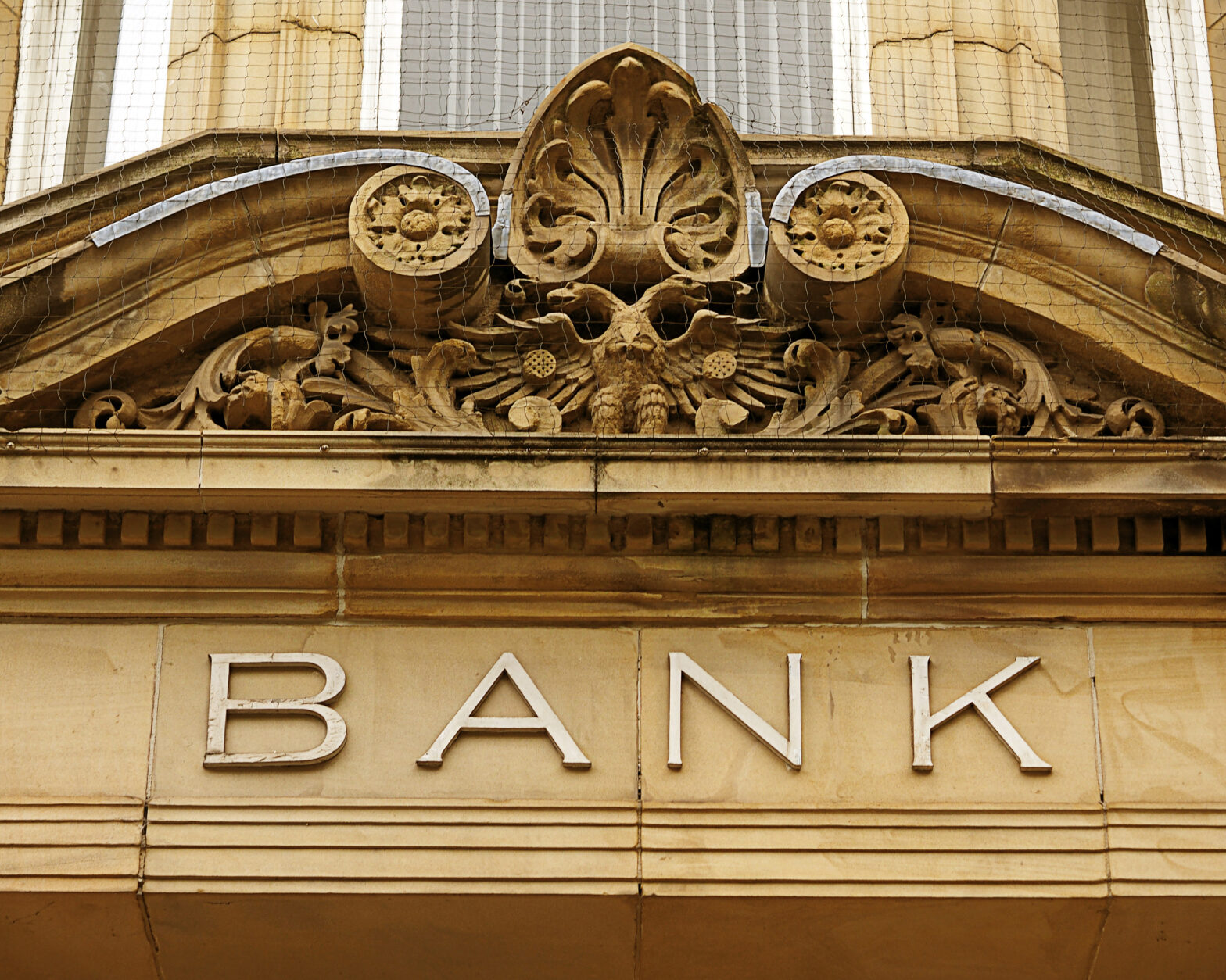Compare Business Bank Account Deals
Compare the UK's top business bank accounts from the high street to the alternatives
1. What type of business bank account are you interested in?
Powered By NerdWallet
Everything starts with a great idea. You work out the product or service features, create concepts, build a prototype and maybe even have the first interested customers.
Perfect, that’s a great start! But there is more to building an entire business than just the product.
Even just for starters, you must decide on the format of the business (eg PLC, LLP, sole trader), choose a company name, buy a domain and create a website, register your business, open a bank account, get an accountant, get proper insurance, maybe rent an office and hire employees. So there is a lot to be done before you can plunge into your new business venture.
This article will help you get a deeper insight into the banking part specifically.
Many small business owners start with just opening a simple bank account, not analysing a broad spectrum of banks based on suitability. Maybe you have your own private bank account at this bank and trust them with your money. Several factors make very clear that choosing the right kind of banking services is necessary and a major opportunity to get your business basics right from the beginning.
What you need to know about small business banking
After the crisis in 2008, the financial sector saw many profound changes, particularly in the banking and payment sphere. Today, banks and financial institutions are being scrutinised even more than before the crisis.
However, the crisis also engendered growth and innovation, as seen in the rise of new types of banks: so-called challenger banks. Plus, new regulations like the European Payment Services Directive 2 (PDS2), which aims at making money transfers easier, more cost-efficient, and more secure, boost innovation. Fintech start-ups and, eventually, the consumer benefit greatly from this development.
The internet and other technological developments, such as mobile and identification and verification (ID&V) services, lead to new possibilities in banking. Consumers and businesses can choose from a vast range of different bank types and financial service providers that offer services designed to meet even the most specific requirements.
The services they provide are more customer-focused than ever: they comprise fast and easily accessible customer services and support, flexible and modular services, and products that are available around the globe and clock.
High street banks vs. challenger banks
High street banks is the collective term for huge, well-known banks including RBS, HSBC, Lloyds, Barclays, Santander and many more.
Those traditional banks are increasingly viewed as being slow and bureaucratic. They also face a noticeable decrease in consumer trust since the 2008 financial crisis.
But still, they have the advantages of longstanding expertise, an established technical infrastructure, and a vast, often global, banking network. This, and their ability to offer competitive deals, interest rates, and a broad range of services, still makes them an attractive choice.
In recent years, those classic high street banks have been challenged by a multitude of up-and-comers, often called challenger banks.
Technological innovations such as advanced online infrastructures, authentication methods, and encryption options as well as regulatory and logistical innovations have made new types of banking, payments, and financial services possible. Innovation is mainly driven by Fintech companies that combine the financial world and technology. They develop new concepts of banking and disrupt the traditional banking market by changing how banking and payments work.
High street banks and corporates are increasingly acquiring small banks and the ensuing gap in the market drives the development of thriving Fintech start-ups. There is room for small banks that make it easier for small business entrepreneurs to get accounts, loans, and financial services at affordable prices.
“In recent years, those classic high street banks have been challenged by a multitude of up-and-comers, often called challenger banks”
These banking entrepreneurs have to focus on flexibility and customer orientation in order to remain competitive. Most of them also streamline their expenditures by doing without bricks-and-mortar branches, ATMs, and a large customer service staff.
When it comes to your new business, both high street banks and challenger banks have advantages and disadvantages that you should carefully consider. Make the right choice by focusing on your own business requirements first and then figuring out who matches them best, and never the other way round.
Further reading on challenger banks
The key steps of your small business banking and financing journey
The business plan
It all starts with a good business plan. You might have a great plan for your business laid out in your mind. Now is the time to put it to paper.

This will not only help you get a clear focus on your business idea, it also is the basic paper that banks, financial institutions, and investors want to see. It shows that you have thought through your enterprise, know the market, and what sets you apart from the competition. And, eventually, it demonstrates that your business is worth investing in.
A business plan mainly includes your vision and goals for your company, it gives an insight on how you plan to realise your goals and identifies potential challenges your company might encounter.
Your business plan is essential when it comes to approaching a bank for an account, a loan, and other services. Make sure to include financial details like performance forecasts, costs and income, and cash flow forecasts. And most importantly: keep it realistic.
The bank
It is worth the time and effort to look deeper into this matter. Again, detailed knowledge of your business is essential: What does your enterprise need in terms of banking? What are possibly future requirements?
Imagine your product or service becoming a big hit. Your business is growing and so is the number of transactions in your bank account. This makes it more challenging to match payments with your customer’s outstanding invoices. Also, will you expand your business to other countries? Do you plan to offer your customers different payment methods? Check what your bank can offer you and at what cost.
Or maybe a payment service provider (PSP) or Fintech company like ONPEX might be the right kind of partner you need in terms of banking and payment.
Get in touch with the banks or service providers that you think will fit your needs. Get as much information as you can, for example on their services, fees and charges, and interest rates and compare them to find your best option.
And remember: choosing a bank usually means choosing a partner with whom you establish a reliable, long-term relationship, so make sure both of you are happy with the business relationship to avoid future hassle.
Opening and managing a bank account
Opening a business bank account is easy. Once you found your bank, just bring the required documentation to your appointment with the bank adviser.
If you are not sure which documents you will need, simply ask the adviser what exactly you need to bring.
Most banks will ask for the following information:
- National insurance number
- Identification for all named company directors – passport, photo driving license, or national ID card
- Proof of address – recent bank statement, utility bill, or council tax statement”
- Company details (eg corporation tax number, business address, contact details, name, company type, Companies House registration number (for limited companies and partnerships))
- Estimated annual turnover
By the way: when managing your bank account, keep records of all bank transactions. You will need them for your annual tax return.
Furthermore, it is strongly recommended to only give authorised and trusted personnel access to the account and the authority to make payments.
Check your bank statements regularly, always make sure you monitor all the transactions you make, and have a record of receipts to ensure cash flow is managed effectively and you don’t overdraw your account. This way you can handle your funds efficiently and make certain you have enough money in your account to pay your bills and salaries in time.
Further reading on managing a business bank account
Approaching your bank for a loan
Your business is up and running. Now is the time to invest in new assets. In many cases, it is more cost-efficient to get a loan than to pay a supplier in instalments or to save up for an investment.
Just like finding the right banking partner, it takes some research to find the best loan for your business venture. Familiarise yourself not only with what your bank has to offer, but shop around and let your bank know it – maybe they want to match a competitor’s offer.
Most importantly, keep in mind that a bank adviser does not just give you the money out of the goodness of their heart. You must convince them with hard facts that your venture is worth investing in.
Therefore, be prepared! Plan every detail of your project and show its advantages to ensure you get funded. But also, be aware that a loan means turnover for your bank.
You are offering to pay interest for the cash advance, so don’t be shy about letting them know that you are aware how much money they will make through you. Tell your bank that you have done your homework. This might not only lead to a better proposal, it also shows that you know your business value!
If you are looking for cash for a particular project or investment and your business is already up and running, there is no need to compose an entire business plan again. A convincing project presentation and the most important financial cornerstones of your company will be enough in most cases.
A detailed financial plan
However, when you apply for a start-up loan, you should definitely write your complete business plan (as mentioned above) and include a detailed financial plan with estimated figures, forecasts, collaterals, and details on how exactly you will use the funding. Your accountant should be able to help with the latter.

When finally presenting yourself to the bank, be prepared for some critical questions from the bank adviser, even if they already know you well.
So again, know your business and do a good SWOT analysis: What does the market and your industry look like? Who are your customers, partners, and competitors? What are the main challenges and opportunities and how do you plan on approaching these?
If you consider these tips you are on a good way to having your loan granted. But, if it does not work out, you can learn from the experience. Ask your bank adviser for his or her opinion and reasons for the refusal. You might also want to consider different loan options like online lending, angel investors, venture capital, and crowdfunding.
Now you got a general overview of the small business banking sphere and a closer understanding of why it is a major step in your company journey. If you followed our tips above, your company is perfectly prepared to embark on the exciting business journey with a sound financial set-up.
Nevertheless, check your banking requirements from time to time and examine if your current supplier still fits all your needs. It never hurts to shop around occasionally for a new partner that offers better terms or more up-to-date services. Even more so, this becomes necessary when your business is growing and changing.
Christoph Tutsch is founder and CEO of ONPEX, which provides a white-label solution to cover the entire payments value chain.





